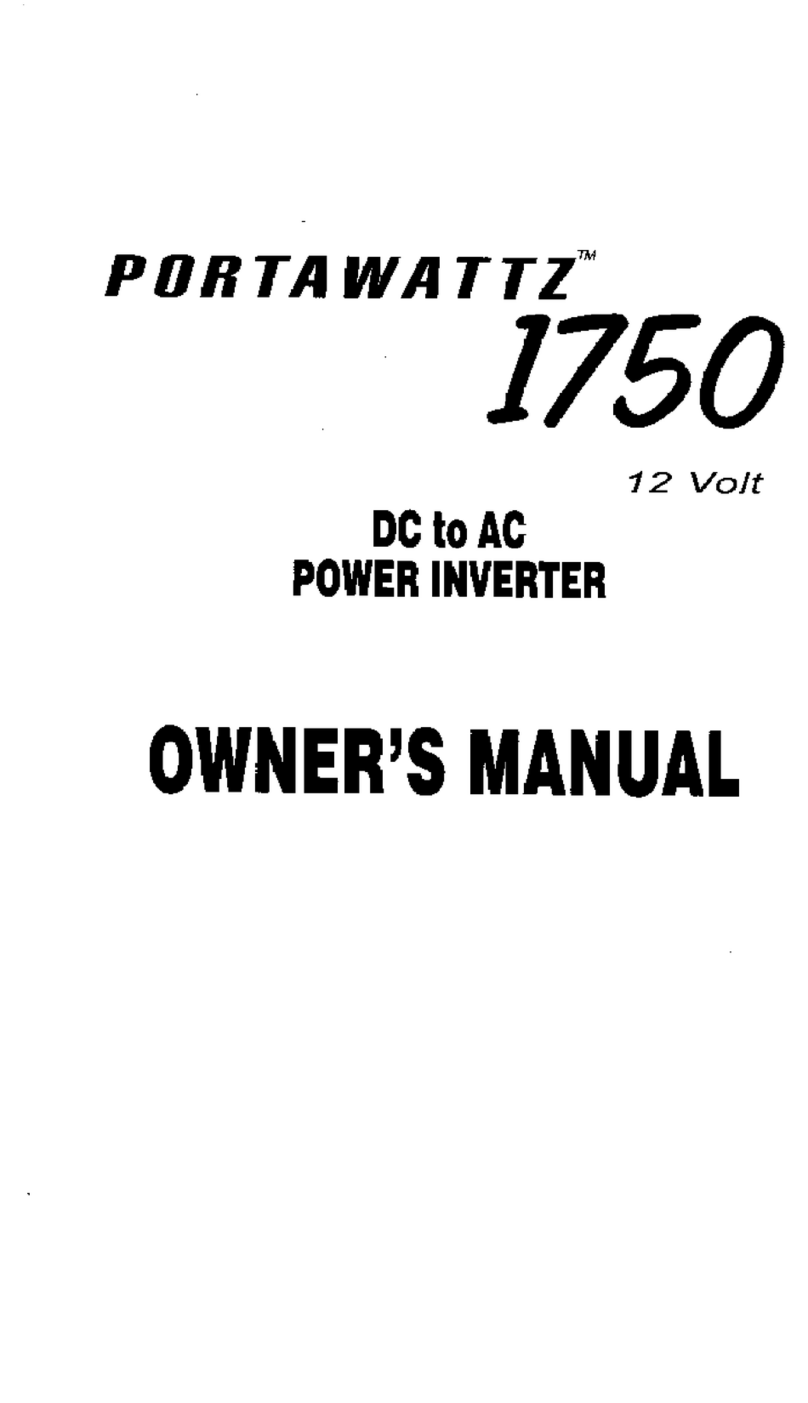
Portawattz is a trademark of Statpower Technologies Corporation. Copyright 1996, 1997, 1999 Statpower
Technologies Corporation. All rights reserved.
Table of Contents
1. Introduction....................................................................................................2
2. How Your Portawattz 1750 Works...............................................................2
2.1 Principle of Operation........................................................................................3
2.2 Portawattz 1750 Output Waveform....................................................................3
3. Quick Checkout ..............................................................................................4
3.1 Power Source .....................................................................................................5
Battery .........................................................................................................5
DC Power Supply........................................................................................5
3.2 Cables.................................................................................................................5
3.3 Test Loads..........................................................................................................6
3.4 Connections........................................................................................................7
4. Installation ......................................................................................................9
4.1 Where to Install..................................................................................................9
4.2 Battery..............................................................................................................10
Battery Type ..............................................................................................10
Battery Sizing............................................................................................ 11
Using Multiple Batteries............................................................................14
Battery Tips ...............................................................................................15
Alternators and Charging Systems............................................................. 16
4.3 Cables...............................................................................................................17
4.4 Connections......................................................................................................18
AC Connections.........................................................................................18
Ground Wiring...........................................................................................20
DC Wiring................................................................................................. 21
5. Operation ......................................................................................................23
5.1 Controls and Indicators....................................................................................23
5.2 Operating Limits...............................................................................................24
Power Output.............................................................................................24
Input Voltage.............................................................................................25
6. Troubleshooting............................................................................................26
6.1 Common Problems...........................................................................................26
Buzz in Audio Systems..............................................................................26
Television Interference..............................................................................26
6.2 Troubleshooting Guide..................................................................................... 27
7. Maintenance..................................................................................................28
8. Limited Warranty ........................................................................................29
9. Product Specifications..................................................................................31
9.1 Electrical Performance .....................................................................................31
9.2 Dimensions.......................................................................................................31
10. Other Products From Statpower Technologies........................................32































